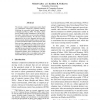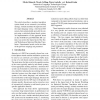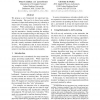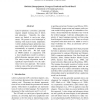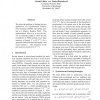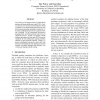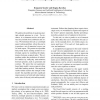NAACL
2007
15 years 1 months ago
2007
We present a sentence compression system based on synchronous context-free grammars (SCFG), following the successful noisy-channel approach of (Knight and Marcu, 2000). We define...
NAACL
2007
15 years 1 months ago
2007
91
Voted
NAACL
2007
15 years 1 months ago
2007
This article describes a machine translation system based on an automatic post-editing strategy: initially translate the input text into the target-language using a rule-based MT ...
NAACL
2007
15 years 1 months ago
2007
We propose a new framework for supervised machine learning. Our goal is to learn from smaller amounts of supervised training data, by collecting a richer kind of training data: an...
47
Voted
NAACL
2007
15 years 1 months ago
2007
Letter-to-phoneme conversion generally requires aligned training data of letters and phonemes. Typically, the alignments are limited to one-to-one alignments. We present a novel t...
67
Voted
NAACL
2007
15 years 1 months ago
2007
We relate the problem of finding the best application of a Synchronous ContextFree Grammar (SCFG) rule during parsing to a Markov Random Field. This representation allows us to u...
109
click to vote
NAACL
2007
15 years 1 months ago
2007
We present several improvements to unlexicalized parsing with hierarchically state-split PCFGs. First, we present a novel coarse-to-fine method in which a grammar’s own hierarc...
107
click to vote
NAACL
2007
15 years 1 months ago
2007
We address the problem of analyzing multiple related opinions in a text. For instance, in a restaurant review such opinions may include food, ambience and service. We formulate th...
78
Voted
NAACL
2007
15 years 1 months ago
2007
The task of identifying synonymous relations and objects, or Synonym Resolution (SR), is critical for high-quality information extraction. The bulk of previous SR work assumed str...
101
Voted
NAACL
2007
15 years 1 months ago
2007
Currently there are several approaches to machine translation (MT) based on different paradigms; e.g., phrasal, hierarchical and syntax-based. These three approaches yield similar...
